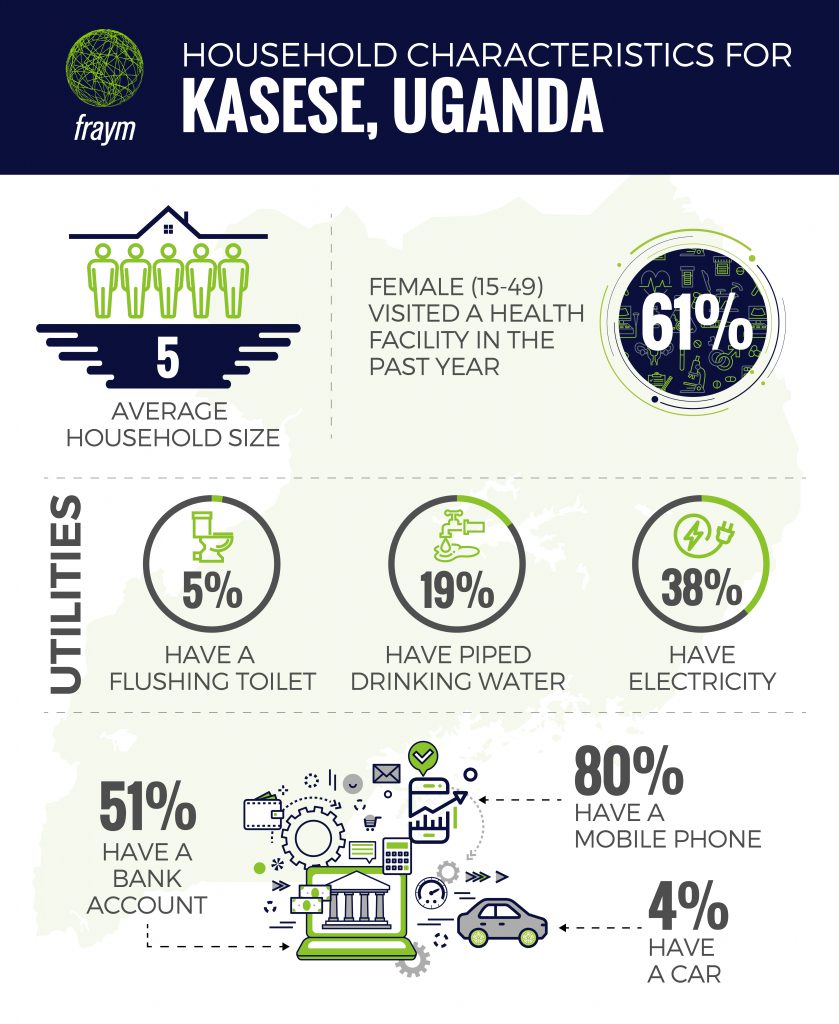Build Effective Social and Behavior Change Strategies


Background
Forty miles west of Kasese is the town of Mpondwe, the busiest crossing on the border of Uganda and the Democratic Republic of Congo (DRC) in terms of trade volume. Scrap iron, coffee, and sawn wood are the biggest Ugandan imports from the DRC, but very recently, the Ebola Virus Disease (EVD) has also crossed the border into Uganda.
EVD is transmitted in humans through direct contact with body fluids. Prevention means avoiding contact with these fluids. According to the World Health Organization (WHO), of particular importance to achieve this avoidance are: 1) to keep excreta separate from drinking water sources; 2) hand washing with soap; and 3) containment of excreta so they are effectively separated from human contact.
The DRC has witnessed more than 2,100 (EVD) infections in the past year, about 1,500 turning fatal, the worst ever outbreak documented in the country. Worst hit have been the provinces of Kivu and Ituri which are in Eastern DRC and which both border Uganda. Fraym uncovered some vital statistics about sanitation in DRC’s Ituri and North Kivu Provinces and in Western Uganda’s Kasese District that can help shed light on the current spread of the EVD into Uganda.
Analysis
Fraym sought to identify characteristics of the people who live in the affected areas. We compared Kasese District to national level statistics in Uganda, and also compared the district statistics to the same indicators in Ituri and North Kivu Provinces in the DRC. Specifically, we looked at household water and sanitation data, as well as other key asset ownership and access indicators. These neighborhood-level insights can be helpful to health workers and organizations planning interventions.

In Kasese there are several notable trends when looking at housing characteristics and indicators of wealth. Households in the region have the highest proportion of top and middle of the pyramid consumers , mobile and bank ownership, and access to electricity, compared to Ituri and North Kivu, indicating higher levels of economic development. Across these three regions, secondary education rates are low. Fewer than 1 percent of Kasese head of households have completed secondary education compared to about 7 percent in Ituri and North Kivu.
Of the three regions, Kasese District has the highest sanitation and hygiene standards. Access to flush toilets is low, with about 5 percent of Kasese households having a flushing toilet, similar to access rates nationally and in Ituri and North Kivu Provinces. In Kasese, about 30 percent share a toilet facility with another household of which about 6 percent share with 10 or more households.
Nationally, over 40 percent share a toilet with another household and about 11 percent share with 10 or more households. When it comes to sources of drinking water, roughly 19 percent of Kasese households get their drinking water from piped-in sources; comparatively, only 3 percent of Ugandans and less than 5 percent of households in Ituri and North Kivu get water from piped-in sources. Additionally, more than 32 percent of households in Kasese do something to make the water safe for drinking, for instance, chlorination, compared to less than 3 percent in North Kivu. Roughly 5 percent of households in Ituri and North Kivu have a recorded hand-washing location, compared to 62 percent of Kasese households.
Using geospatial data we can paint a clear picture of enabling conditions for the spread of EVD is Eastern DRC and Western Uganda. These indicators highlight the need for investment in sanitation programs not only for preventing the current spread of EVD, but also as a means of curbing diseases associated with poor sanitation like diarrhea which the WHO estimates kills about 297,000 children under 5 every year. The ability to understand affected communities at the local level is new and, as an input, will strengthen containment and prevention plans.